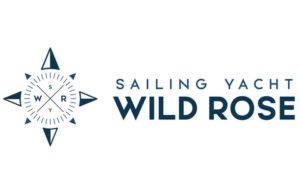Current Location: 13°0’N, 61°14’W – Bequia

As we sit here on anchor in Bequia, I’m feeling extremely thankful to be celebrating another trip around the sun in this beautiful Caribbean anchorage. It’s been quite a year, but more importantly, it’s been way too long since we shared an update on 29 March, so here are a few stats to get started. Since our last update…
- 2+ months
- 7 countries: British Virgin Islands, U.S. Virgin Islands, St. Martin, Guadeloupe, Dominica, Martinique, and St. Vincent & the Grenadines.
- 1,100 nautical miles
- 2 mahi
- 100+ turtles
- Lots of new cruising friends & maybe a little too much rum punch
The island-hopping ‘sample platter’
This 2024 cruising season for us is best described as a “sample platter”. We knew we’d have time to visit a lot more islands on our way down to Grenada for hurricane season (July-Nov) than we did last time in 2021, but we wouldn’t have tons of time in any one place. Factors we took into account when deciding where to go included weather (always!), distance to next location, has it been a place on our top 10 list for awhile, recommendations from other cruisers, and of course, needing to be in Grenada by July. Our insurance requires us to be out of the ‘hurricane box’ from July-Nov. The ‘hurricane box’ for us (every marine insurance is slightly different) is the northern tip of Grenada to Cape Hatteras. This is essentially a no-go zone for us if we are hit by a “named storm.” Here’s a bit of what we did and enjoyed on each of the islands/island groups:


British Virgin Islands: 16 March-22 April. Jason used to work in the BVI and we’ve sailed there before on charter boats so it’s very familiar. We were in the BVI for a month which was awesome, but it’s never enough! BVI is a sailor’s paradise. You can hop from island to island easily. Jason’s brother, Ryan and his girlfriend came to visit for a week which was fantastic and Ryan graciously acted as an Amazon-sherpa for us & brought us many much-needed items. Thank you, Ryan! Highlights: Jost Van Dyke: Bubby Pool, Ivans beach bar, Soggy Dollar, Foxy’s restaurant; Tortola: We found a non-popular anchorage called Brandywine Bay & it was typically flat-glass calm which was delightful; Norman’s Island: Willy-T’s (what happens on Willy-T’s SHOULD stay on Willy-T’s!), Virgin Gorda: Savanah Bay anchorage which is the quintessential Caribbean sandy beach anchorage, The Baths, The North Sound with Bitter End Yacht Club.

U.S Virgin Islands: 22 April-5 May. USVI and BVI are, at the closest point, only about 2 miles apart so moving between the 2 countries is very quick & easy. You still have to check out of BVI and check into USVI but both processes are quick and easy. We’ve never sailed in the USVI and were pleasantly surprised at the beautiful anchorages and very well-maintained mooring balls. We spent our entire time around St. John which is pristinely beautiful with lots of great hiking trails. The main town of Cruz Bay has lots of restaurants and shops and we found our new favorite burger joint at Tap & Still. We think it’s even better than In-n-Out. I know, I thought that was impossible too & it was inexpensive which was a bonus. Highlights: Very well maintained hiking trails all over the island, Francis Bay/Maho Bay on the north is a huge, quiet, bay and then on the south side Great Lameshur Bay was so quiet and remote and a great place to be in a northeast wind.
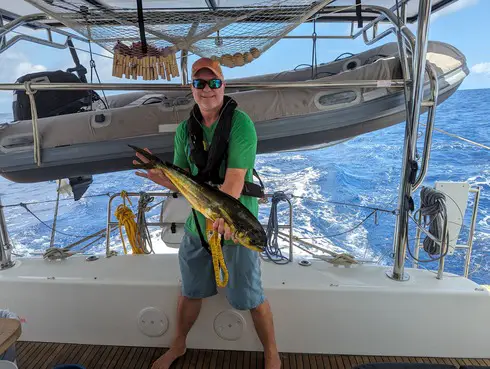
St. Martin: 5 May-14 May. 75 nautical miles from BVI. We used to keep our boat in St. Martin for non-hurricane season and we’ve been there many times so it feels like coming home almost. As you probably know, St. Martin is French on the north side and Dutch on the south side. We always check in and anchor on the French side because the French have it going on when it comes to cruisers. The check in process is so easy—you just go into whatever store doubles as a customs office, sit down at the do-it-yourself computer, enter the info and voila! That’s it. Typically free and takes about 5 min. Some of the many things we love about St. Martin is the fantastic grocery stores for provisioning, the people are easy going, water is beautiful, hiking, restaurants are plentiful, serve delicious meals and typically are very reasonably priced. Highlights: Island Water World chandlery, Garden Market grocery on Dutch side, Zee Best Bakery, Marigot & Grand Case anchorages—both are big with great holding and cool towns.
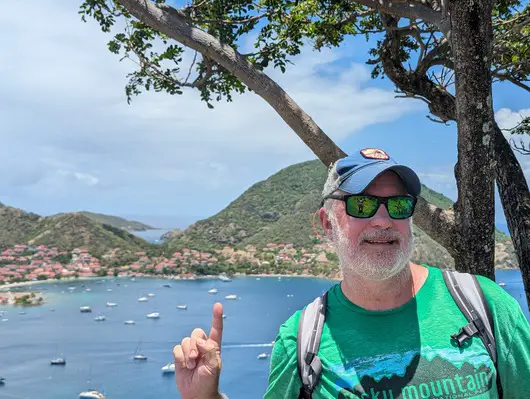
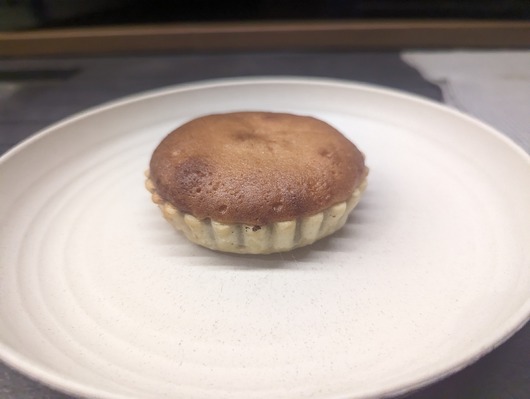
Guadeloupe – Les Saintes: 14 May-20 May. 165 nautical miles from St. Martin. Took just shy of 24 hours. Guadeloupe is the butterfly-shaped island and we’ve been wanting to visit this French island for awhile. Following several cruisers’ recommendations, we decided to head to the very south to a group of islands called Les Saintes. Ok, seriously. Could a bay, island and town be any cuter and more beautiful? It’s ridiculous. The main island of Terre de Haut has the only town called Le Bourg (translation.. The Town). It’s 95% French-speaking but there are a few people in restaurants and shops that know some English but we tried our best with our spotty French. Fort Napolean is a great walk from town and beautifully maintained with a great museum. There are good smells coming from the boulangeries, patisseries, restaurants and oh, don’t forget the older women sitting around town with their baskets of homemade Tourmant L’amour (love’s torment). These are little pastries about the size of your palm with a variety of fruit (passionfruit, pineapple, banana, mango) and custard filling. They sell 4 for 4 Euros and they are a treat! The story goes that back in the day, women would make these pastries and bring them to their husbands returning from fishing trips. Plus, great hiking to work off all the calories! Highlights: Daily baguettes, pain au chocolat, super relaxed atmosphere, awesome hikes up to the tallest peak on the island and another up to Fort Napolean, and pretty good snorkeling. We also met some really fun fellow cruisers here and ended up travelling together for a few more islands. Really looking forward to returning & also visiting the main island of Guadelupe next season.
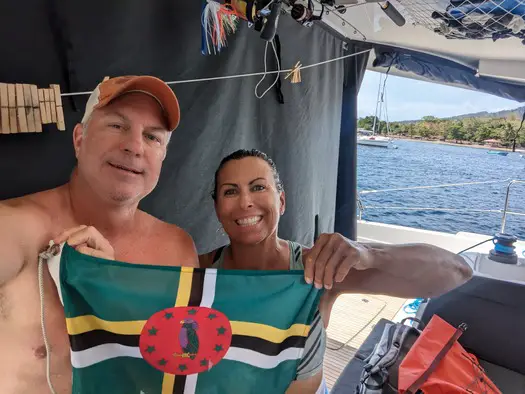

Dominica: 20 May-23 May. 20 nautical miles from Les Saintes to Portsmouth which is on the northwest side of Dominica (not to be confused with Dominican Republic). Wow. If I had to choose one word to describe Dominica it’s LUSH. You could drop a seed on the ground and it would sprout. Dominica is such a steep island that places to anchor with good holding are rare so we coordinated to use a mooring ball that’s managed by a group called PAYS—Portsmouth Authority Yacht Services. This is a group of association of businesses that got together to provide services like well-maintained mooring balls, tours of the island, help with customs and immigration, cruisers BBQs, and probably most importantly… safety. Many cruisers used to avoid Dominica because of the crime and theft from boats in anchorages until this organization was formed and they put a stop to the majority of the issues. Don’t get me wrong, there is still theft as there is everywhere in the world. Highlights: We took a day tour up into the mountains and visited a fruit farm run by a 92 year old man who grows pineapples, mangos, coconuts, bananas, avocados, papaya, watermelon and all the cacao for the islands chocolate factory. We also swam under a waterfall, had a nice lunch in a seaside town on the north side of the island, and visited a chocolate factory where we got a tour of the process and enjoyed very tasty samples. We still have some of the dark chocolate-dipped pineapple. On our last day in Dominica we moved to an anchorage on the southwest side of the island near Pointe Michel so we’d have a shorter trip to Martinique.
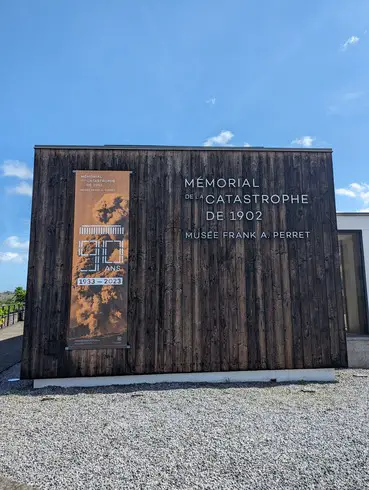
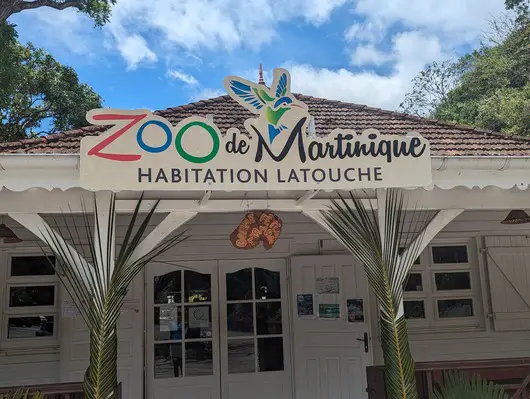
Martinique: 24 May-28 May. 34 nautical miles from Pointe Michel to Saint Pierre on the northwest part of Martinique. Ah, Martinique. Another wonderful French country so you know… baguettes. We spent the first 2 days in St. Pierre & then moved down the coast to the main city of Fort de France (truly a big city with high rises and fancy buildings.) We wanted to visit Saint Pierre for the history. In 1902 Saint Pierre was a thriving town only second to the main town of Fort de France. Tragically, the Mt. Pelee volcano erupted and killed all 30,000 residents in less than 3 minutes. There were 2 survivors, one of which is famous for being a prisoner in a stone jailcell. He was saved by the thickness of the walls and was found a few days after the eruption. He went on to join the Barnum & Bailey circus in the States as a miraculous survivor. Fort de France is a big city with everything you’d expect in a big city, including Fort St. Louis which is still an active military fort. Highlights: Volcano museum in Saint Pierre, Martinique Zoo in Saint Pierre—fantastic zoo incorporating ruins from the 1902 town into the design of the property, baguettes. We’re looking forward to returning to Martinque in 2025 as there are so many other areas of the island we didn’t see.
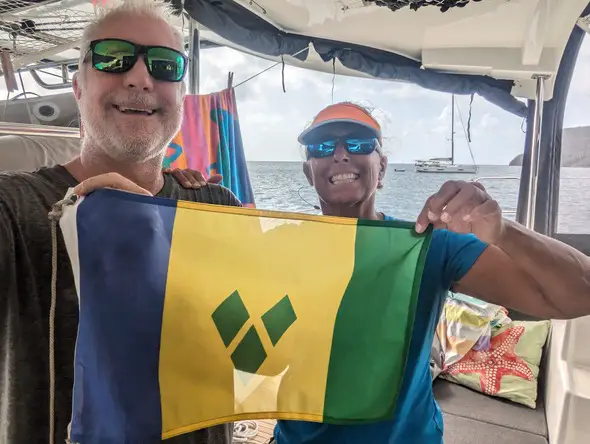
St. Vincent and the Grenadines – Bequia: 29 May – ???. 100 nautical miles from Fort de France to Bequia’s Admiralty Bay on the west side. We left about 1pm on 28 May and arrived around 1pm on 29 May. Would have been a bit faster if it weren’t for a wicked strong current against of in the lee of St. Lucia. We skipped St. Lucia and the main island of St. Vincent for a variety of reasons. Mainly because Jason used to work on St. Lucia and I visited him there. We both feel like we’ve seen St. Lucia. We skipped St. Vincent, the main island of St. Vincent and the Grenadines because it’s known as not being all that safe for cruisers. But… we LOVE Bequia and are looking forward to seeing a lot more of this island along with many of the other islands that make up the Grenadines. The Grenadines are known for the diving, snorkeling, and variety of islands. Highlights: tbd.
Fun & Challenging: Darn you, Acceleration Zones!
This stretch of our journey has been fun and challenging in equal parts. The fun has been all the exploring, learning, and meeting great people. The challenging part has been watching for weather windows to keep moving south. Winds have seemed to me to be a bit stronger than expected, plus the most common wind direction for this part of the eastern Caribbean this time of year is east or southeast—which is where were heading which = bumpy rides between islands because of ocean swell and wind chop. We watch for weather windows (moderate wind and smaller swell/waves) and take them as they come. There’s always a temptation to wait & see if a better window opens up, but there’s no guarantee. So, you go, which means that sailing, day or night, in between the islands in what’s called the Acceleration Zones, can be attention-getting. The Acceleration Zones are where the wind accelerates as it’s being funneled between the big, steep islands. For example, if the wind is forecasted to be 15-17 knots, we prepare for 25-30 knots between the islands. We share with fellow sailors who are moving between islands for the first time that Acceleration Zones are no joke and not to be ignored when heading out.

Constant learning
A friend asked how we learn about each island—where to anchor, things to see and do, etc. We use a mix of digital apps and hard copy guidebooks. Here’s a picture of a few of them. These Sailor’s Guides are by Chris Doyle who is one of the leading Caribbean cruising experts and has spent decades cruising and getting to know each island. They publish different books for groups of islands—for example we have the books for the Leeward Islands and the Windward Islands. We also use a variety of apps for weather and exploration including Navionics, Windy, Navily, noforeignland, Cruiser’s Net, Google maps, Predict Wind, etc. It’s constant research in preparation for the next adventure.
We’re excited to keep exploring and learning even though it will likely also be challenging along the way. If you’ve gotten this far in this update (sorry, I know probably too long!), I’ll leave you with this quote and my wish for you is to keep exploring, learning, and discovering new things in big and small ways.
“Man cannot discover new oceans unless he has the courage to lose sight of the shore.”
André Gide, French explorer (1869–1951). This conveys the importance of courage when moving into the unknown. It suggests that to discover something new, you must be willing to:
- Let go of what is familiar and comfortable
- Confront your fears
- Embrace the unknown
- Go beyond what is known
Have a beautiful day!
